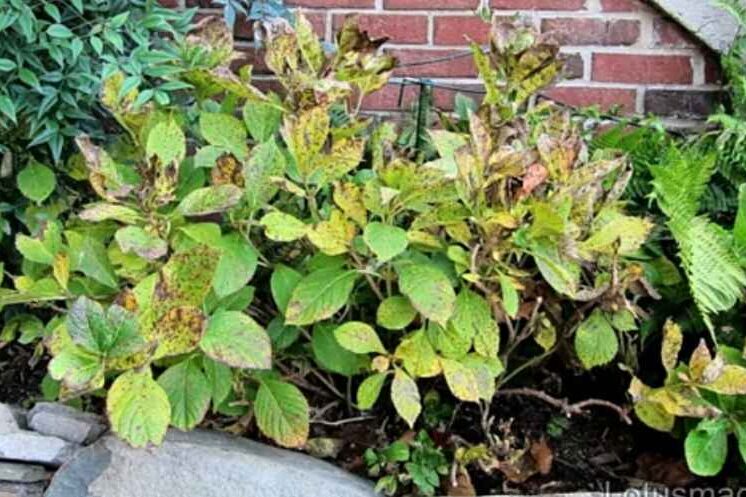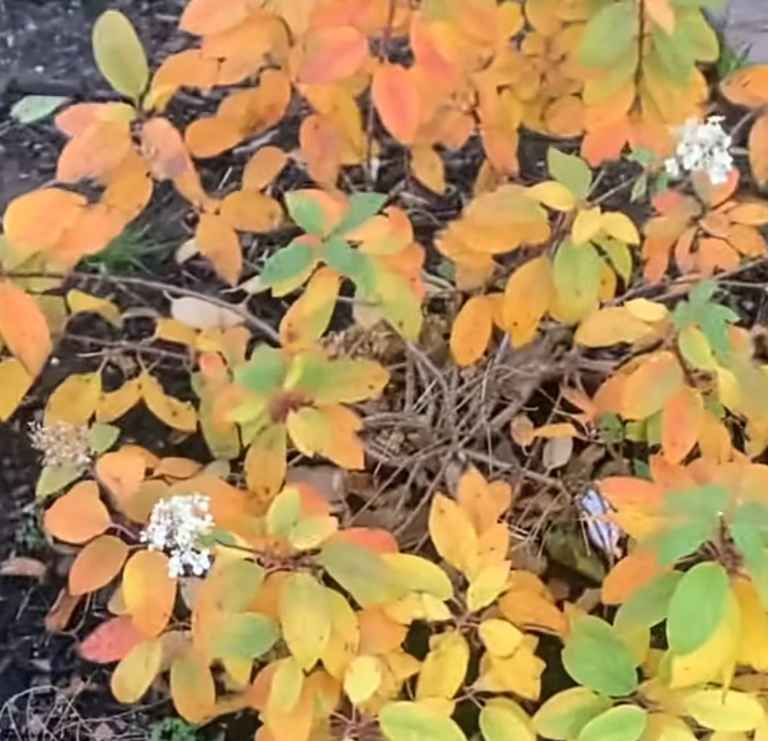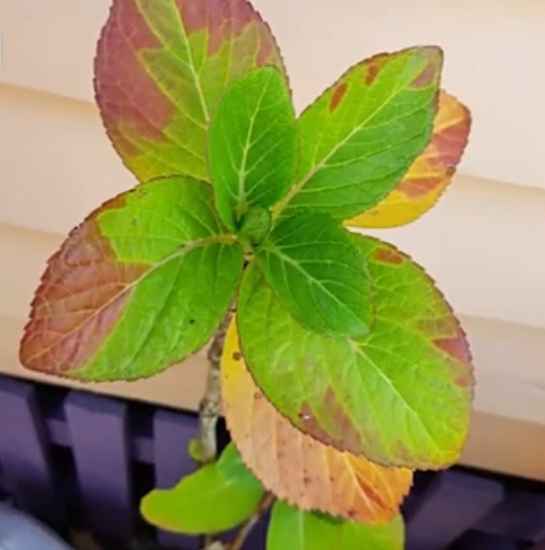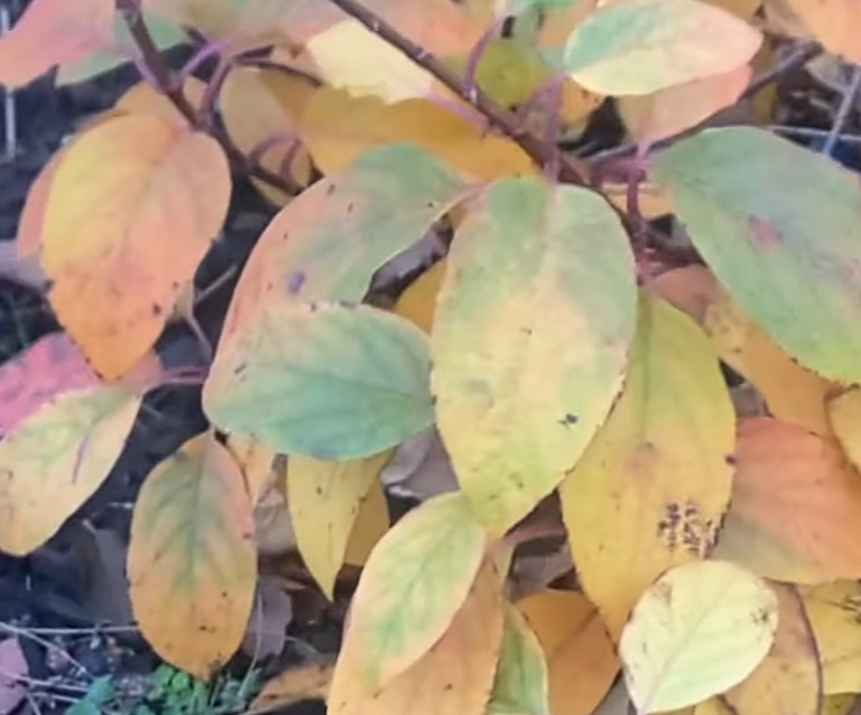Seeing yellow leaves on your hydrangeas can worry, especially when plants are usually lush and healthy. The leaf veins often stay green, which is a clear clue that something is affecting the plant’s chlorophyll production. This condition, chlorosis, is usually a sign of nutrient deficiency, with iron as one of the most common culprits. The shortage of this vital element disrupts photosynthesis, affecting the plant’s ability to produce food and causing it to struggle. Hydrangeas, especially the big-leafed shrubs, need a healthy balance of nutrients for optimal growth and vibrant blooms. Without it, they may show signs of stress, like yellow leaves, and lose their luster.
Also, read my guide on:
Revive an Overwatered Pothos Fast with These Proven Tips
Poisonous Mushroom That Grows on Trees!
Sometimes, the yellowing could be caused by poor soil conditions or environmental factors. Iron and other nutrient deficiencies are often the potential causes behind this issue. You can correct this by adjusting the soil pH or adding iron supplements. Providing a balanced appearance through proper care can help the plant regain health. These changes will encourage the plant to return to its best look, with vibrant green leaves and a rich backdrop of healthy blooms. Following these tips ensures your hydrangeas thrive and prevent further yellowing.
Identifying Yellowing Leaves (Chlorosis) in Hydrangeas
When you notice yellowing leaves on your hydrangeas, it’s often a sign of a nutrient deficiency. For instance, iron deficiency can cause chlorosis, where the leaf veins stay green, but the rest of the leaf turns pale yellow. This can be especially visible on the young leaves or oldest leaves, and if left unchecked, the leaves might become completely yellow with no green leaf veins.
An iron shortage is a common cause of this condition. It can sometimes be accompanied by other deficiencies like nitrogen, magnesium, or sulfur, all of which cause subtle changes in the leaf’s appearance. These nutrient shortages can happen in the soil or when hydrangeas are mistreated in containers or beds.
As a survival mechanism, your hydrangea might change color or drop off leaves to preserve energy for growth. Suppose the plant shows signs of chlorosis on the interior shrub leaves. In that case, it’s likely trying to protect the panicle hydrangea leaves. The yellowing can be more noticeable for plants with thick leaf veins, as the veins remain green while the rest of the leaf fades. This is often a sign that the plant struggles to efficiently perform photosynthesis. Correcting these nutrient deficiencies with the right fertilizers and soil amendments will help your hydrangea return to full health.
Sometimes, it’s not just a lack of nutrients that causes yellow leaves. Plant diseases and pests can also damage the plant, leading to yellowing leaves. The young leaves may show the first signs of damage, while older leaves may become more severely affected. Suppose the yellowing is happening in bed or container settings. In that case, checking the soil pH is essential, as imbalances can also interfere with nutrient uptake. Addressing iron deficiency and providing the right balance of nutrients will ensure that your hydrangeas bloom beautifully and stay healthy.

Why Are Your Hydrangea Leaves Yellowing?
Improper Watering
It could be due to improper watering if you notice yellowing leaves on your hydrangeas. Both underwatering and overwatering can cause stress to the plant. Moisture problems such as root rot can result from poor watering habits, and addressing these quickly is important. A moisture meter can help you identify whether the soil is too wet or dry, allowing you to fix the issue accordingly. Once you determine the moisture levels, taking the proper steps for correction, like adjusting the watering schedule, will help your hydrangea return to health.
Poor Drainage
Another reason for yellowing leaves could be poor drainage in the soil. Hydrangeas thrive in loamy soil but struggle in clay or overly sandy soils that don’t allow water to drain properly. If the soil isn’t well-draining, water can form rainwater puddles around the roots, leading to root suffocation and stress on the plant. To improve drainage, you can test the soil by digging a small hole and checking how quickly water absorbs. If needed, amend the soil with aged compost or sand to help absorb water and keep the roots healthy.
Improper Sun Exposure
Sun exposure plays a key role in the health of your hydrangeas. While some hydrangea cultivars can handle direct sun, many varieties prefer morning and afternoon shade. Suppose your hydrangea is exposed to too much sunlight, particularly during the hottest parts of the day. In that case, the leaves may begin to turn yellow. If you notice this, consider relocating the shrub to a more balanced sun exposure location. This will allow your plant to thrive and maintain its lush green leaves while supporting vibrant blooms.
Poor Soil
Poor-quality soil is another common cause of yellowing leaves. When the soil lacks essential nutrients, the plant may develop nutrient deficiencies like iron or nitrogen, which can lead to yellowing. Testing the soil’s pH levels with a home test can help identify any imbalances. Find that the soil is too acidic or too alkaline. You can improve its quality by adding the appropriate amendments, such as lime or sulfur, and incorporating organic matter like compost. This will ensure the soil provides the nutrients for your hydrangeas to stay healthy and vibrant.
Nutrient Deficiency
Nutrient deficiency is one of the most common causes of yellowing foliage on hydrangeas. If you notice your plant’s leaves turning yellow, it could be due to incorrect fertilization. This can happen if you use too much fertilizer or not enough or apply the wrong product. Hydrangeas are acid-loving plants, and they need specific nutrients to thrive. Following the package directions for fertilization is important. Suppose your hydrangea isn’t getting the right balance of nutrients. In that case, it might show yellow foliage, indicating it’s not getting the nutrients it needs.
Disease
Hydrangeas are susceptible to various diseases that can cause yellowing foliage. Fungal, bacterial, and even viral diseases like the hydrangea mosaic virus or tomato ringspot virus can lead to yellowing leaves. These diseases can cause spots or other damage, but yellowing is often the first noticeable sign. Early identification and treatment are important to stop the disease from spreading to other plants in your garden.
Pests
Pests can also be responsible for yellowing foliage on your hydrangeas. Two-spotted spider mites are common pests that cause damage to the plant. They create fine webbing on the undersides of leaves and cause yellow spots to appear. If the problem worsens, you may see holes in the leaves or even experience defoliation. These pests can also spread disease. To combat them, use treatments like neem or horticultural oil to manage the infestation and protect your plant from further damage.

How to Treat Chlorosis in Hydrangeas
Regular watering
A lack of water is one of the main reasons your hydrangea leaves may turn yellow. Hydrangeas need consistent moisture to thrive; they can start showing signs of dehydration when they don’t receive enough water. This lack of hydration causes the plant to shut down processes like photosynthesis, leading to yellow leaves. Without regular watering, the plant’s root system struggles to absorb nutrients, causing the plant’s health to decline.
During hot weather or dry weather, your hydrangea may need more attention. If rainfall isn’t sufficient, you may need to water manually to ensure the plant receives 1 inch of water per week. You can check soil moisture by performing the finger test—stick your finger into the soil to see if it’s dry. If the soil feels dry, it’s time to water. Without proper hydration, hydrangea leaves will droop, and wilting may occur. Eventually, the leaves may drop off, further weakening the plant.
To prevent this, ensure that your hydrangea gets enough water, especially when establishing roots. Manual watering may be necessary during dry spells. By keeping the soil consistently moist, you can prevent the plant from suffering the effects of dehydration and help it stay healthy and vibrant.
Soil pH
If your hydrangeas have yellow leaves, one common cause might be the soil pH. Hydrangeas prefer slightly acidic soil, typically with a pH between 5.0 and 6.2. When the pH of the soil is too high or low, it can affect the plant’s ability to absorb key nutrients like iron, leading to nutrient deficiency. In alkaline soil with a pH above 7.0, iron availability becomes limited, which often causes yellowing leaves due to chlorosis. On the other hand, acidic soil with a pH below seven can also cause issues, making it harder for hydrangeas to thrive.
If the soil pH is off, you can adjust it using soil amendments. Consider adding elemental sulfur or aluminum sulfate to lower the pH and create a more acidic environment. These amendments help the plant access the nutrients it needs, including iron. Adding organic matter like compost or manure can also improve the soil’s structure, helping with nutrient absorption. If the pH is too low, you can raise it by adding lime to the soil, creating a more neutral soil with a pH of 7.
In addition to correcting the soil’s pH, using a balanced fertilizer that follows the instructions for the correct proportions is essential. Over-fertilizing can also harm your hydrangeas, so applying targeted fertilizers and supplements is important when necessary. This helps ensure that your hydrangea receives all the required nutrients, keeping the plant healthy and vibrant with colorful flowers, whether blue, pink, or white.
Location and Sun Exposure
If your hydrangea has yellowing leaves, it may suffer from chlorosis, often caused by poor growing conditions or lack of iron. Start by ensuring the location is appropriate. Hydrangeas prefer partial shade or filtered sunlight, particularly in hot climates. Direct sunlight can stress the plant, leading to yellowing leaves, especially during hot weather. If your plant is exposed to excessive heat, consider moving it to a shaded location or using a shade cloth to reduce sun exposure and prevent it from becoming stressed.
Inspect for Pests and Diseases
It’s important to regularly inspect your hydrangea for pests or diseases, as these can also contribute to yellowing leaves. Pests can spread diseases, making the situation worse. Plant hygiene is key—removing and destroying infected parts will prevent the issue from spreading. Regular plant inspection will help you catch any problems early, allowing you to address them before they cause serious damage.

Prevention Strategies for Chlorosis in Hydrangeas
Proper Watering and Moisture Control
Adjusting your watering schedules to prevent yellow leaves from accumulating on your hydrangeas is important. Use a moisture meter or perform a finger test to check the soil moisture and ensure the plant isn’t getting too much or too little water. Soggy soil can lead to root rot, while parched conditions can stress the plant, causing it to wilt. Make seasonal adjustments to watering, especially during hot weather, and provide shade to protect the plant from midday sun. Keeping the hydrangea well-watered without over-watering will help maintain its health and prevent yellowing leaves.
Pest and Disease Prevention
Regular check-ups and observations for pest invasions or diseases are essential. Look for signs of pests like aphids or fungal issues like powdery mildew that can lead to yellowing. To reduce the spread of disease, ensure proper airflow around your hydrangeas by pruning overcrowded branches. This will help prevent moisture buildup and create an environment less favorable for pests. Taking preventive actions, like treating pests early, will keep your hydrangeas healthy and free from damage.
Also, read my guide on:
Dealing with Pill Bugs (roly polies) and Sowbugs in the Garden
Soil Health and Fertilization
Maintaining healthy soil is crucial for preventing yellow leaves. Hydrangeas thrive in slightly acidic soil with a pH between 5.0 and 6.2. Regularly monitor the soil pH and adjust it if necessary. Additionally, a balanced fertilizer should be applied to provide a nutrient boost. Be cautious not to over-fertilize, which can cause lazy plants and stress. Proper fertilization and maintaining the right soil conditions will keep your hydrangeas strong and vibrant, avoiding the yellowing of leaves.
Final Observations
Yellow leaves on hydrangeas can indicate various issues, including nutrient deficiencies, improper watering, or pests. Regularly checking the soil pH, ensuring the plant gets the right water, and maintaining a pest-free environment can prevent yellowing and promote healthy growth. Adjusting environmental conditions, such as sun exposure and ensuring healthy soil, is key to keeping your hydrangeas vibrant and stress-free. Your hydrangeas will thrive with proper care, showcasing their beautiful blooms and non-yellow leaves.

FAQs
Q- Why Are My Hydrangea Leaves Turning Yellow?
Yellowing leaves on hydrangeas can be caused by nutrient deficiencies, improper watering, poor soil conditions, diseases, or pests.
Q- What to do About Yellow Leaves on Hydrangea Bushes?
To fix yellow leaves, check the soil moisture, adjust the soil pH, provide proper watering, and inspect for pests or diseases.
Q- Why Does My Wild Hydrangea Have Yellow Leaves?
Yellow leaves on a Wild Hydrangea may indicate nutrient deficiencies, poor soil, or issues with watering. Check for iron deficiency, improper pH, or overwatering.
Q- How Can You Tell if a Hydrangea is Overwatered or Underwatered?
An overwatered hydrangea will have soggy soil, drooping leaves, and possibly root rot, while an underwatered hydrangea shows dry soil, wilting, and yellowing leaves.
Q- How do you fix yellow hydrangea leaves?
Fix yellowing leaves by adjusting watering habits, correcting soil pH, adding iron supplements for nutrient deficiencies, and checking for pests or diseases.
Q- What does overwatered hydrangea look like?
An overwatered hydrangea has yellowing leaves, soggy soil, drooping leaves, and possibly root rot or fungal growth.
Q- What deficiency causes the yellowing of leaves?
Iron deficiency is a common cause of yellowing leaves in hydrangeas, often due to poor soil pH or lack of nutrients.
Q- How to treat chlorosis in hydrangeas?
To treat chlorosis, adjust the soil pH to make it more acidic, add iron supplements, and ensure proper watering and drainage.










